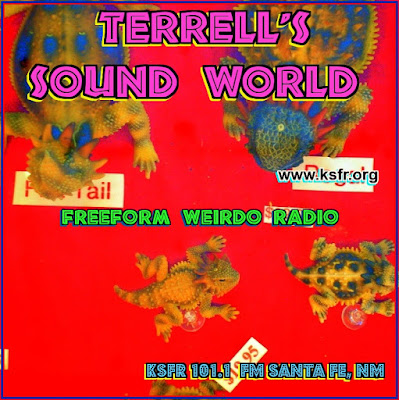My friend Phil from North Carolina pointed out that the entire memorial service will be available on the NPR web site, but just for a week.
As published in The Santa Fe New Mexican
Ray Charles is one of the reasons I love music enough I have to write about it.
Ray was there for me right at the beginning, when I was eight years old and first started listening fanatically to the radio. One day in the spring of 1962 at a supermarket I sneaked two record albums into my mother’s grocery cart. One was Sam Cooke’s Twistin’ the Night Away. The other Ray Charles’ landmark crossover hit Modern Sounds in Country and Western Music. Mom was cool. She paid for them. (LPs were about $3 each back then.)
They were first real albums. And that was it. Between Cooke’s “Whole Lotta Woman” and Brother Ray’s exuberant “Bye Bye Love” and achingly sad “You Don’t Know Me,” there was no turning back. Alvin & The Chipmunks just weren’t going to do it for me anymore.
That was 42 years ago. Since then I’ve gone up and down countless other musical paths -- many roads that are directly connected to and influenced by Ray Charles and his gospel-colored, blues drenched soul, and some that seemingly have little or nothing in common with the man behind the shades.
But, to paraphrase the lyrics of “Georgia on My Mind,” for me all those roads lead back to Ray Charles.
It struck me last week the night after Ray Charles died, as I was playing “You Don’t Know Me” as a part of a radio tribute, how that song cuts to the essence of unrequited love. You can hear the tears, the frustration, the self scorn, as he sings the bridge, “Afraid and shy, I let my chance go by …” The singer’s emotion is so raw you barely even notice the sweetening strings and white-bread chorale behind him.
And it struck me how the song retains all the power it had when it first punched me in the gut back in the third grade. If anything, it’s even more powerful to adult ears.
Of course, it’s the raw power of his emotion -- in addition to his vocal and piano talents -- that made Ray Charles so great in the first place. He blended so many styles of American music -- R&B, blues, gospel, country, pop, Broadway show tunes -- into his own distinctive sound then used them to express the entire spectrum of human emotion.
Try to find a more joyful song than Ray’s version of “You Are My Sunshine,” which, with the help of Raelette Margie Hendrix he makes sound like a Dionysian voodoo orgy.
Try to match the subtle seething anger of “I Believe to My Soul,” in which he doesn’t sound like he’s kidding when he threatens to “use my rod.” And try to match the sheer, sweating lust of the call-and-response section of “What’d I Say.”
He had tunes that were full of humor -- “It Should Have Been Me,” his take on “Makin’ Whoopee,” and “Understanding,” where his threat of decapitation is played for laughs. (“Her soul better belong to the good Lord, ‘cause her head gonna belong to me.”)
The Genius has songwriting credits on many of his early classic songs (“Hallelujah I Love Her So,” “I’ve Got A Woman,” “I Believe to My Soul“), but he’s best known for making tunes written by others into his own.
He had access to some top-notch material of course. From Hoagy Carmichael to Doc Pomus, from Buck Owens to Stevie Wonder. And Ray Charles did Beatles songs (“Yesterday,” “Eleanor Rigby”) better than The Beatles did Ray Charles tunes. (The Fab Moptops’ short, lo-fi and forgettable version of “Hallelujah, I Love Her So” is on their Beatles Anthology 1.)
But the thing about Ray Charles is that he was perfectly capable of turning a bad song into a good one by reaching into the depths of the tune, finding the one kernel of soul and building on it.
He proved this in the early seventies with “Look What they’ve Done to My Song, Ma” some pop bubblegum by Melanie. Look what he did to her song! By the end of it, he's improvising, ``I'm insane, insane, mama, I'm goin' crazy, mama!”
And the only time I ever got to see Ray Charles in person -- Albuquerque’s Civic Auditorium, December 1982, with a purple checkered jacket, a 17-piece orchestra and a beautiful batch of Raelettes -- he made “Oh What a Beautiful Morning” into one of the night’s most memorable songs. Normally the line, “The corn is as high as an elephant’s eye” is a self-fulfilling prophecy. But Charles made the audience savor it, drawing each word out slowly until you couldn’t help but smile. And he turned the lyric, “The sound of the Earth is like music,” from an empty-headed truism into a mystical statement of purpose.
Ray Charles is one with the Earth now. Like that lucky old son, he’s rollin’ round Heaven all day. The rest of us should just feel grateful for all the music he left behind.




No comments:
Post a Comment
Note: Only a member of this blog may post a comment.